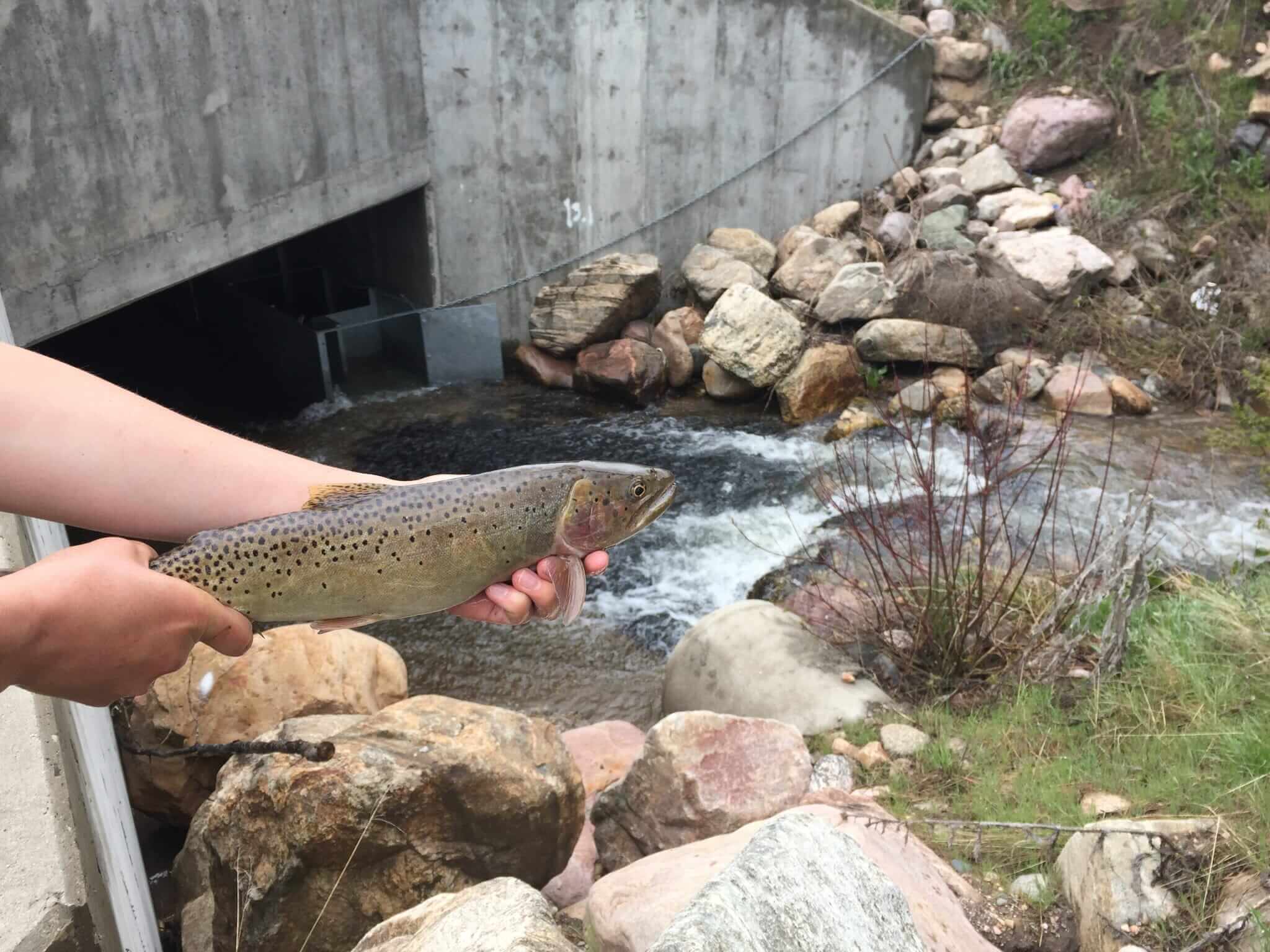
29 Apr Projects Funded through the Utah Cutthroat Slam
Your Slam Registrations Turned into Conservation Projects and Outreach
By
Trina Hedrick, Coldwater Sportfish Coordinator for the Utah Division of Wildlife Resources
Hayden Cook, Assistant Director of the Utah Cutthroat Slam for Utah Trout Unlimited
The Utah Cutthroat Slam is an opportunity for anglers to explore the great state of Utah in search of our four subspecies of native cutthroat trout: the Bonneville, Bear River, Colorado River, and Yellowstone. Before anglers begin their journey, they register for the Slam by paying the required $20 fee, of which $19 of those dollars go straight back into cutthroat trout conservation projects. The satisfaction of anglers who participate in the Slam is particularly high, in part because they feel that their involvement in the Slam is making a difference for these special fish.
In the past few years the Utah Division of Wildlife Resources has been publishing which projects have been accepted for the coming year to receive funding raised by the Slam. But for this article, we wanted to look back to the beginning of the Utah Cutthroat Slam and shed light on all the projects that have been supplemented or completely paid for by the Slam.
For a map displaying all the Slam-funded projects, click here.
Strawberry Creek Fish Passage – $1,600 – One of the earliest projects that the Slam helped fund was the construction of a fish ladder through a culvert under I-84. This project aimed to reconnect Strawberry Creek to the Weber River and allow native cutthroat trout access to this important spawning tributary. The culvert is 385 feet long and water rushing through was far too fast and powerful for trout to successfully pass when it came time to spawn in the spring. In the fall of 2016, the project was completed in part through Slam donations, and it effectively reconnected the headwaters of Strawberry Creek to the Weber River. Cutthroat have since been documented traveling up this tributary to spawn, aiding in Bonneville cutthroat trout conservation.
In recent high-runoff years, the ladder has experienced some damage and parts of it have filled in with riverbed material, so partners are once again working together to repair the damage and restore full access.
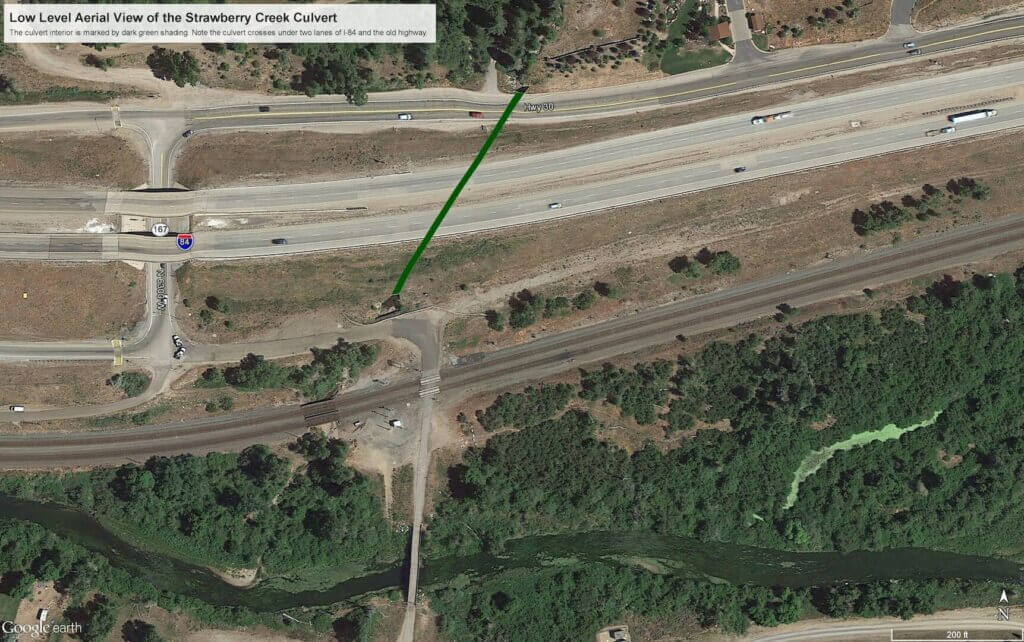
The location of the Strawberry Creek culvert 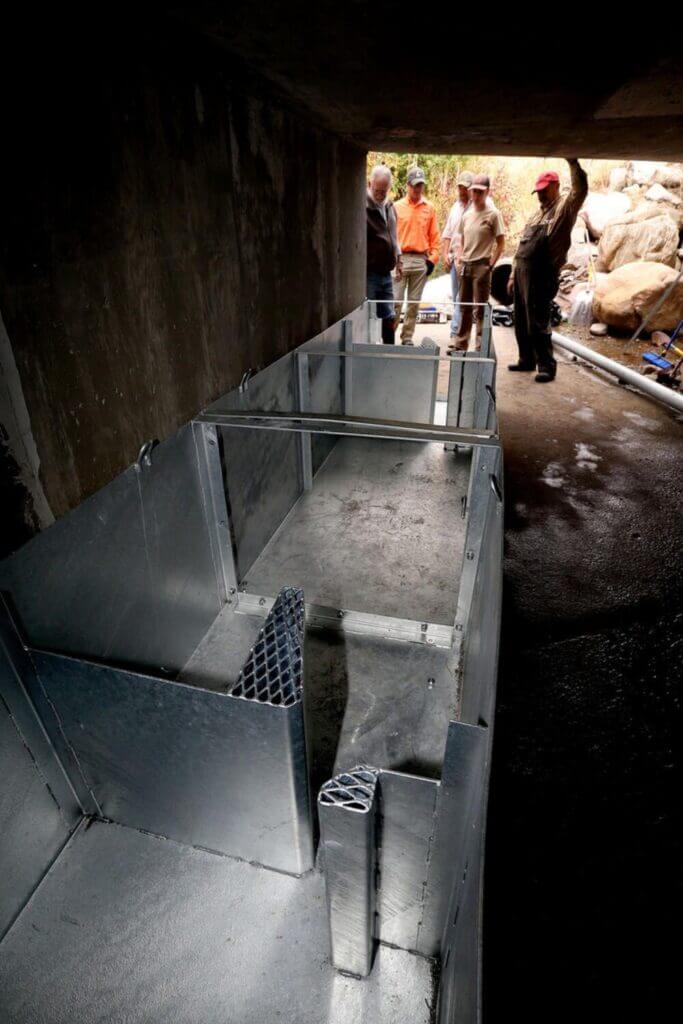
The install of the fish ladder 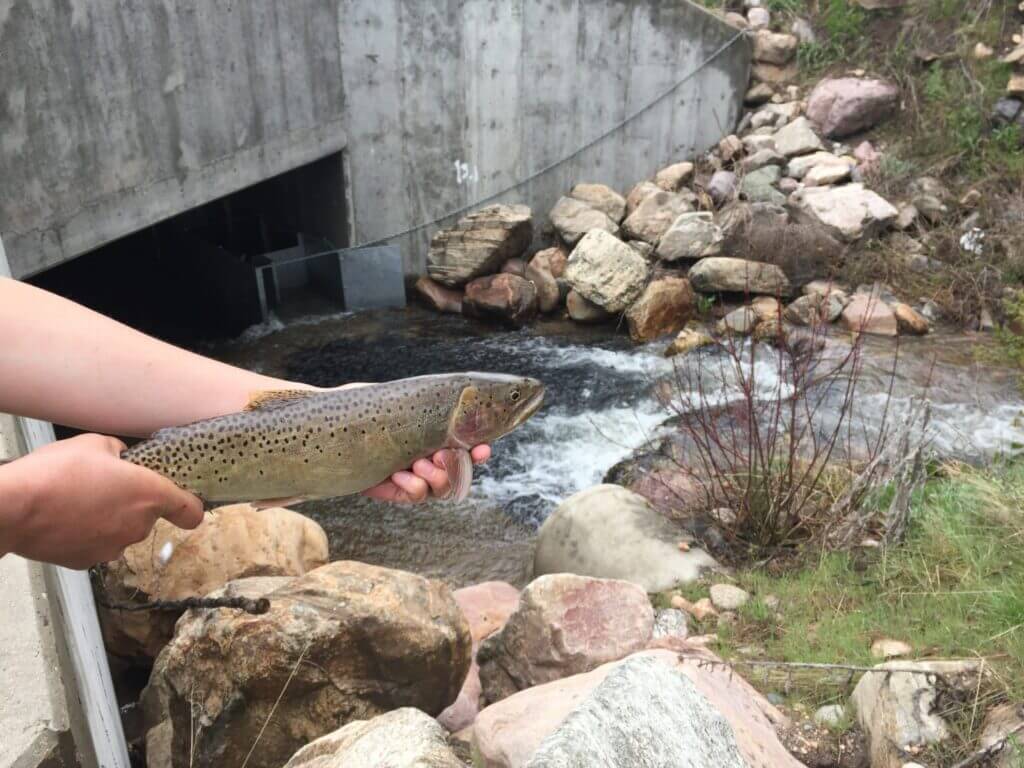
A Bonneville Cutthroat surveyed from above the fish ladder
Logan River PIT Tag Array – $1500 – In 2016 Utah State University researchers tracked the movement of native Bear River cutthroat trout in the Logan River. For this project, the Slam helped purchase instream monitoring equipment in the Right Hand Fork of the Logan River. These types of projects help us understand the movements of these fish by showing us possible blockages to stream travel, migratory travel distances, and the overall range these trout inhabit. Information like this can then help lead to further projects down the road.
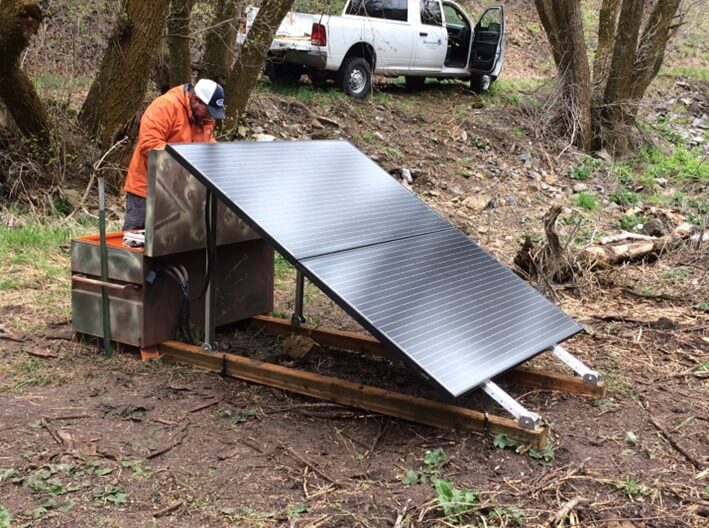
Jacobs Creek Fish Passage – $1,500 – Jacobs Creek is one of five small direct tributaries that flow into the Weber River near Ogden, Utah. Although small, each of these tributary streams plays an important role in supporting critical spawning and rearing habitats for the fluvial Bonneville cutthroat trout that occur within this reach of the Weber River. These cutthroat trout represent an ecologically important conservation population with a unique migratory life history. Unfortunately, most of the spawning habitat in these tributaries remains inaccessible, blocked by road crossings and irrigation diversions. TU, UDWR and other partners continue to work collaboratively to improve fish passage on all of these tributaries in hopes that someday, Bonneville cutthroat trout can freely move throughout this drainage unobstructed. This project removed a barrier and reopened 2 miles of critical spawning habitat to BCT in 2016-2017.
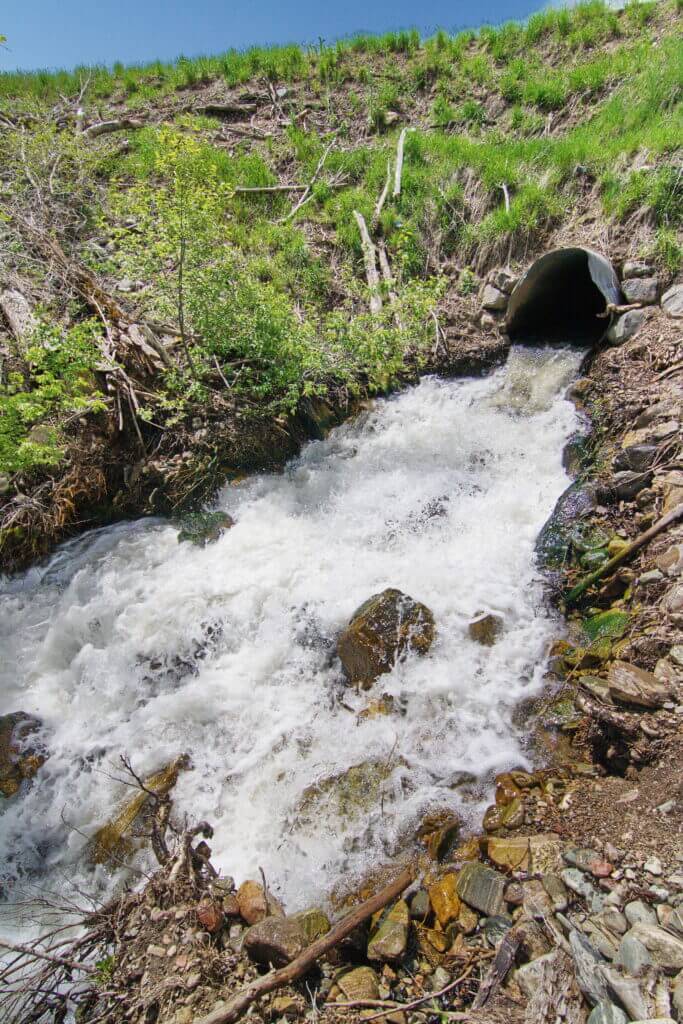
Jacobs Creek Culvert Before 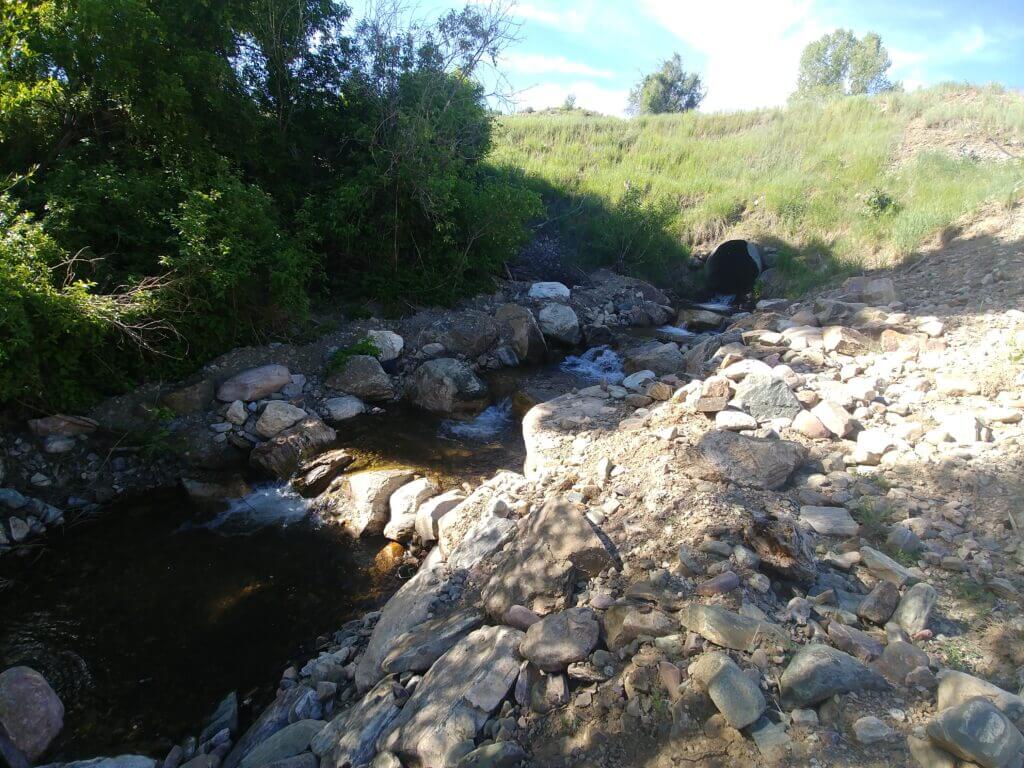
Jacobs Creek Culvert After
Beaver Creek Culvert Replacement – $2,500 – Trout Unlimited replaced a culvert on Beaver Creek, located in the La Sal Mountains of Southeastern Utah, with help of Utah Cutthroat Slam funding. The culvert replacement in 2021 now allows Colorado River cutthroat to migrate and access native spawning grounds. The project also reduced sediment deposition in the river, improving water quality and the likelihood of young fish survival. This effort was part of a larger one undertaken by TU to improve fish passage around the state. To read more about this creek and its unique lineage of Colorado River cutthroat, click here.
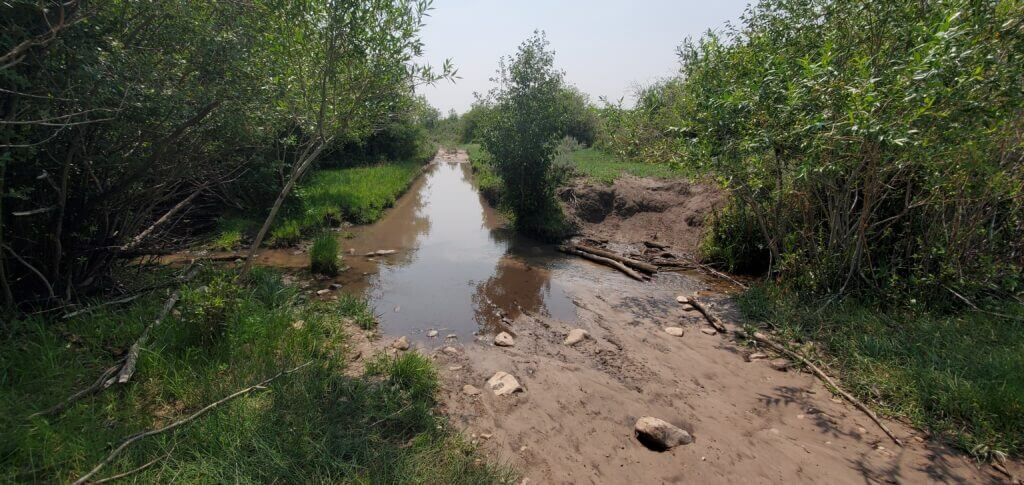
Beaver Creek Crossing Before 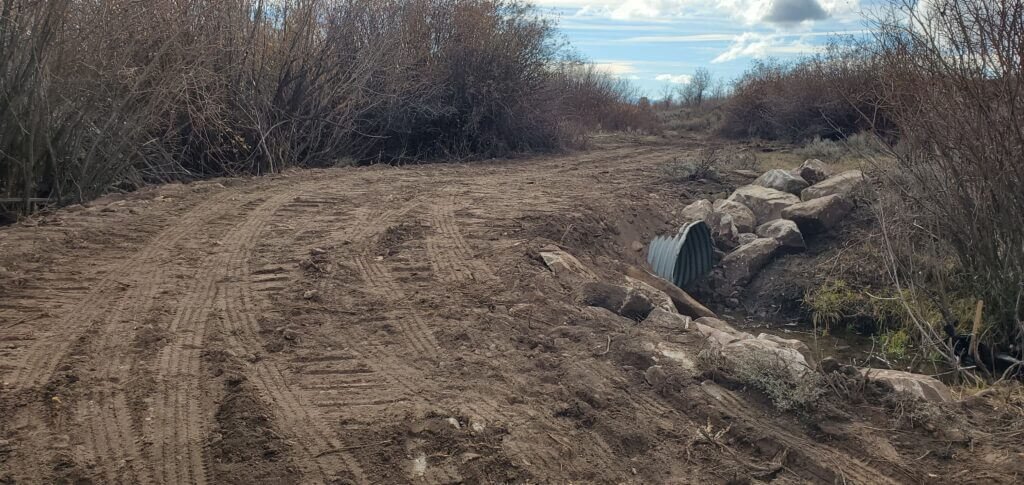
Beaver Creek Crossing After
Temple Fork Interpretive Signs – $1,300 – In 2017/2018, the design and installation of signage about native cutthroat trout was done at Temple Fork, a tributary to the Logan River. This project helps spread awareness for native fish, their habitat, and conservation efforts on their behalf.
Porter Creek Weir Removal – $2,500 – The USFS removed the Porter Fork weir, located on Porter Fork, a Mill Creek tributary, so both spawning and resident Bonneville cutthroat trout would have proper passage up and down the stream. It would also give access to an additional mile of stream. This work was done in association with the Mill Creek BCT Restoration Project from 2013 to 2017. The final stockings of the reintroduced Bonneville cutthroat occurred in 2017, so this project ensured that habitat for all life stages was suitable for perpetuation of the restored population.
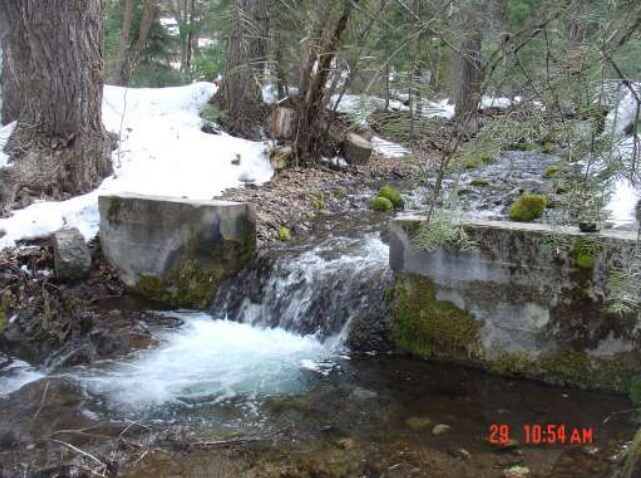
Porter Fork Weir Before 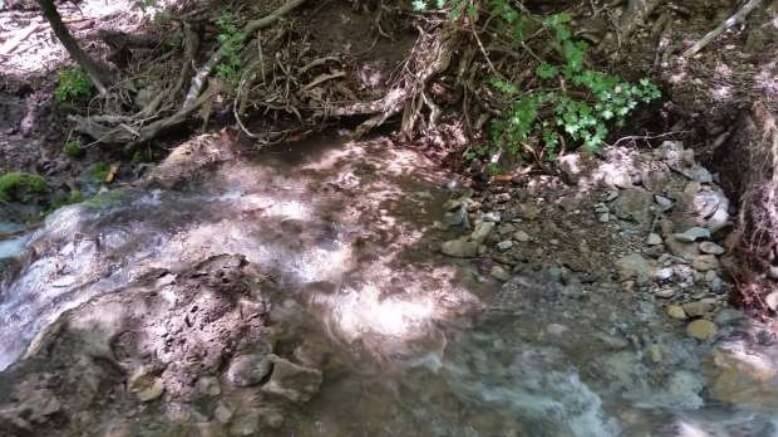
Porter Fork After Weir Removal
Upper Weber Acoustic Tags – $2,500 – These funds helped with a project aiming to track and study the movements of native cutthroat trout in the Upper Weber drainage.
Sheep Creek Trap & Interpretive Kiosk – $5,000 – Sheep Creek Lake supports one of several native Colorado River cutthroat trout broodstocks in Utah. The lake flies under the radar for the quality of fish to be had there, with fish commonly exceeding 20 inches. The DWR regularly receives questions about the concrete fish trap structure at the lake, and the lake’s management purpose. Between 2017 and 2019, construction of a new fish trap structure occurred at the lake. Shortly after, an angler’s interpretive kiosk was added to educate anglers about the lake’s and trap’s purposes, as well as how the Utah DWR manages native cutthroat trout within the state of Utah.
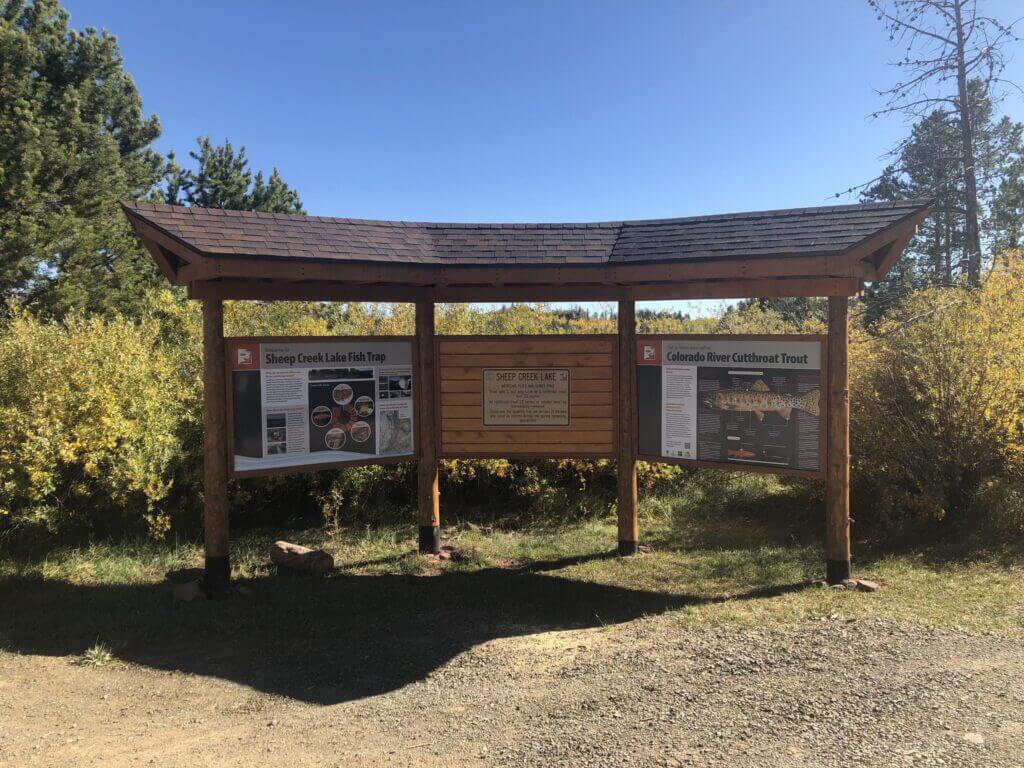
Beaver Relocation Trailer – $1,500 – The Beaver Ecology & Relocation Collaborative was founded to enhance and support the practice of relocating beavers to improve degraded riverscapes. They provide live trapping, transport, and care of problem beavers and release to locations that can benefit from the reintroduction of these ecosystem engineers. Slam funds helped with the purchase of a transport trailer in 2018, designed to ensure a safe and secure relocation process. Beavers are a useful tool in cutthroat conservation as they reshape the stream habitat in ways that directly benefit cutthroat. This includes creating deeper, slower-flowing pools, storage of cold water to help trout overwinter, improving water quality, stabilizing streamflow, creating more complex habitats with areas for trout to seek shelter, and recharging groundwater and raising the water table over time so flows are more consistent, even during low water years.
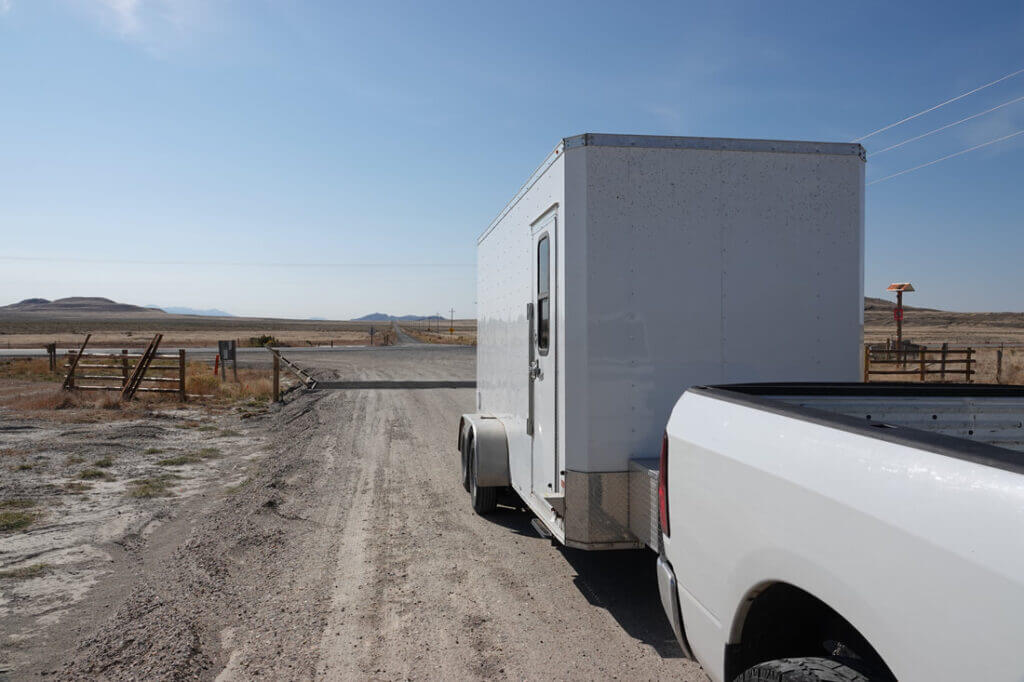
The Beaver Trailer is entirely stainless steel inside to allow for easy cleaning and has a generator that runs a heating and cooling system. The trailer also has a large tank of fresh water for the beaver, holding pens, and space for a four wheeler to take the beaver to their new homes. 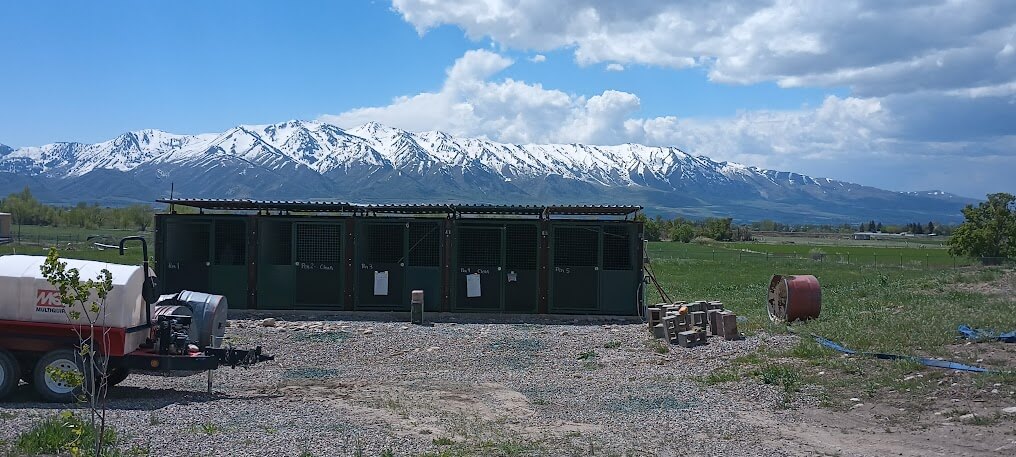
The Beaver Bunkhouse provides a place to house ‘nuisance’ beaver when relocating them to more suitable locations.
Deadman Creek Interpretive Signs – $300 – Two signs were installed at the Uintalands Association fishing pond to inform members and guests about native species restoration efforts in the Deadman Creek drainage. Benefited species include Bonneville cutthroat trout, Northern Leatherside Chub, Boreal Toad, and other native nongame fish species.
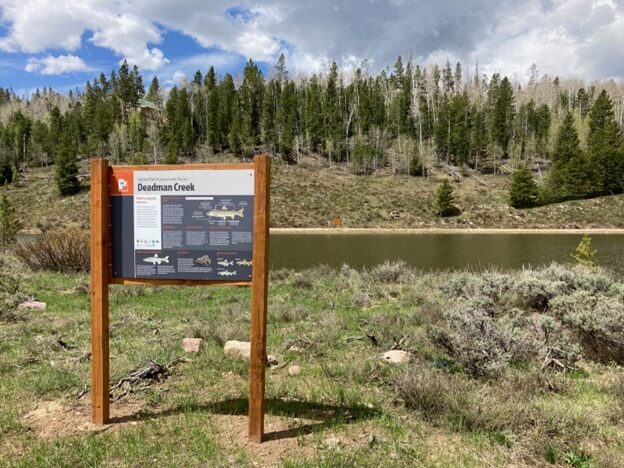
Clear Creek Sign – $1,400 – Near the confluence of Fish Creek and Clear Creek in central Utah, the Utah Cutthroat Slam helped fund the sign and building materials that were installed here.
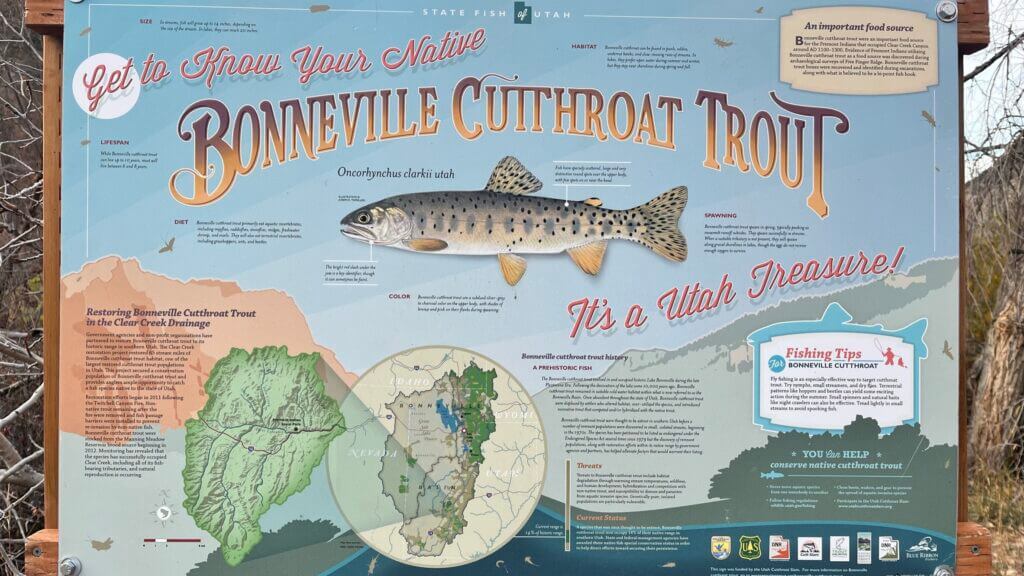
Basin Creek Fish Passage – $2,500 – This project aimed to repair/replace dilapidated water diversion structures and make them passable to fish in order to reconnect ~3.3 miles of Basin Creek. This creek is the native range of Yellowstone cutthroat trout and Bonneville Basin/Snake River bluehead sucker. This project is part of a larger, multi-phase project to repair and replace multiple diversions and road crossings that currently inhibit fish passage throughout the South Fork Junction Creek watershed and is still in progress today. Ultimately the lower sections of this watershed will be treated to remove non-native brown trout and restore the entire watershed to native fish exclusively.
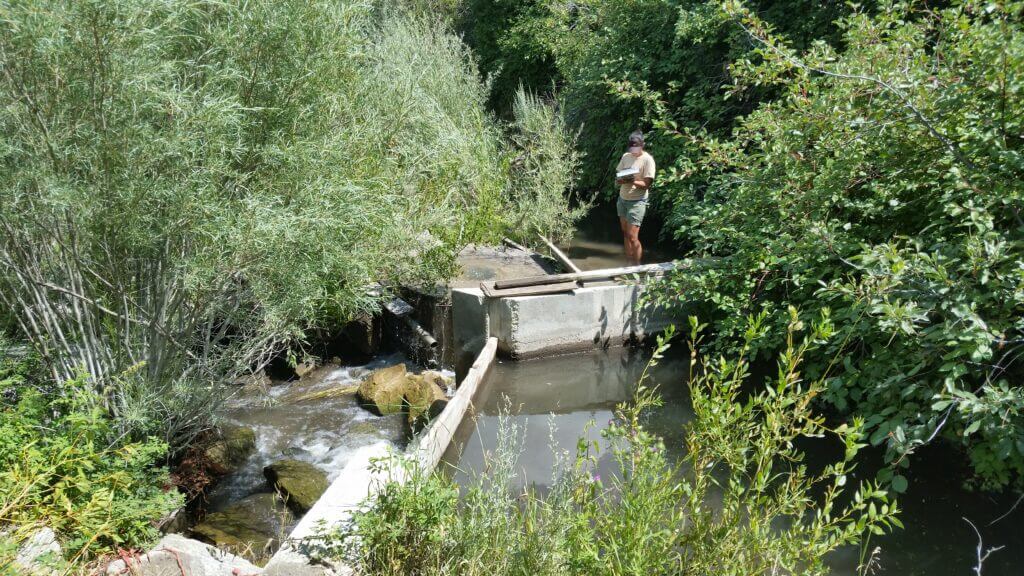
The existing water diversion structure, impassible to fish 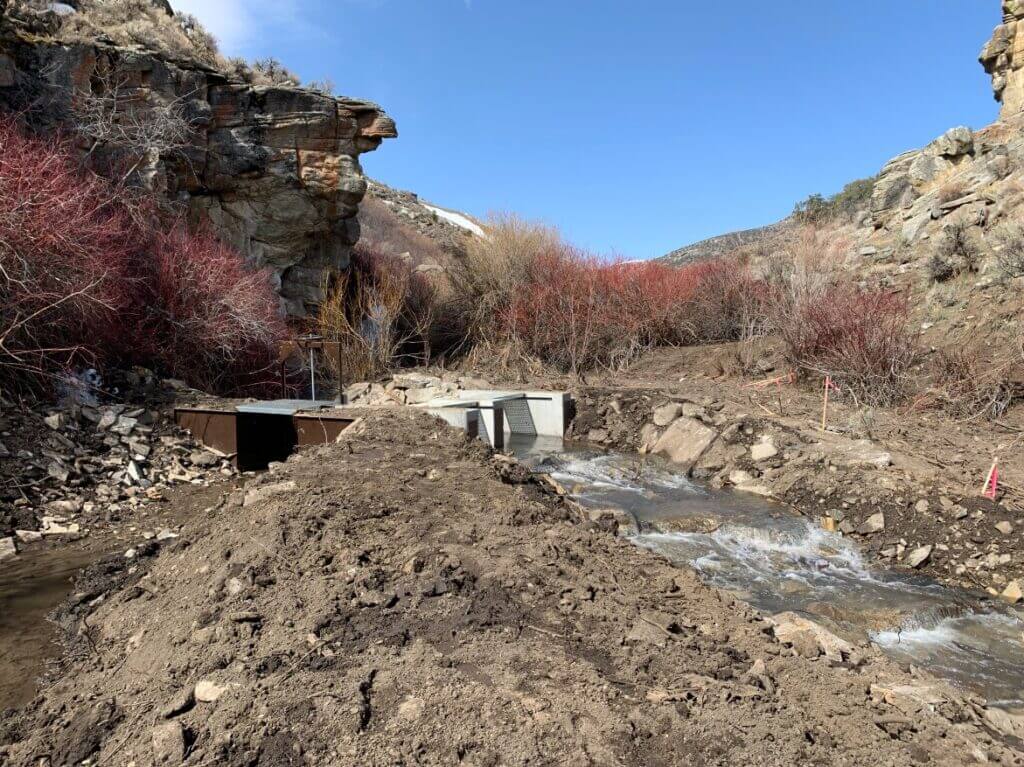
Refurbished creek with fish passable step pools elevating stream to diversion structure. 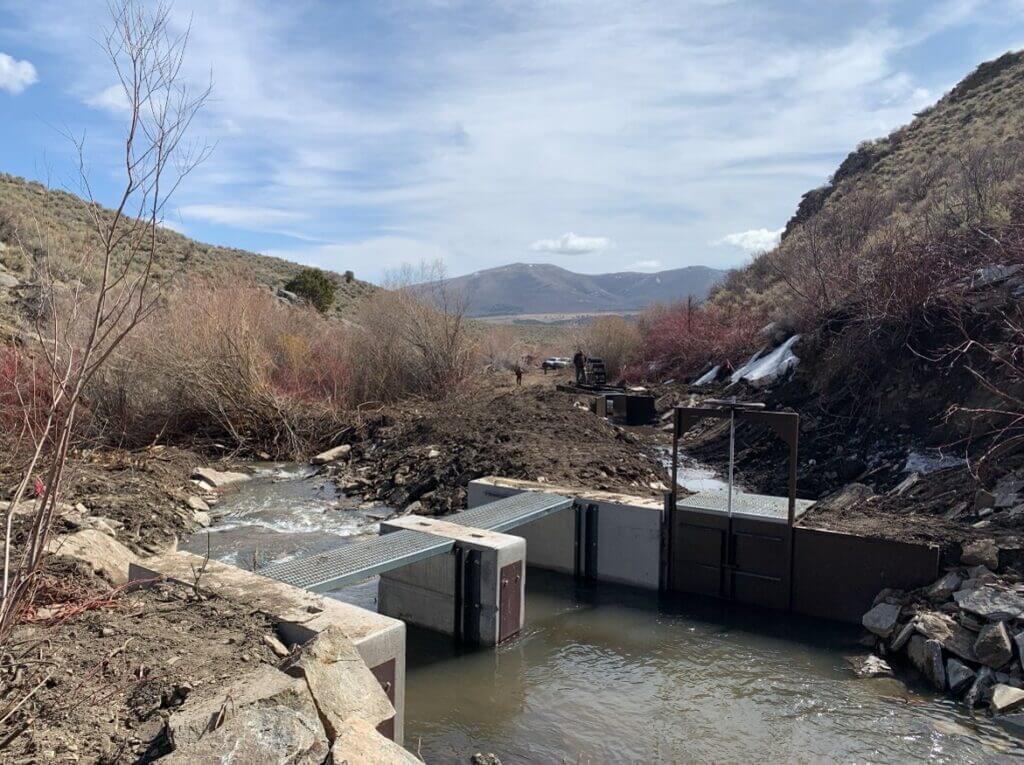
Diversion Structure after installation. Irrigation ditch to the right, Basin Creek to the left, allowing fish passage without fish ending up in the ditch
Mill Creek Migration Screen/Barrier – $1,600 – Following the Bonneville Cutthroat Trout Restoration Project in Mill Creek Canyon from 2013 to 2017, this fish screen project aimed to prevent the invasion of downstream nonnative trout into the restored sections of the creek. Preventing the mixing of the native and nonnative fish will avoid competition or potential hybridization between the species.
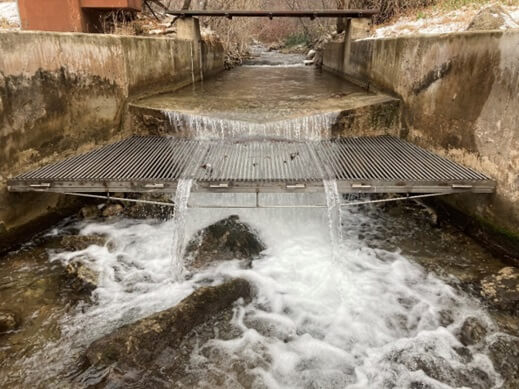
Mill Creek metal grate barrier installed December 2021 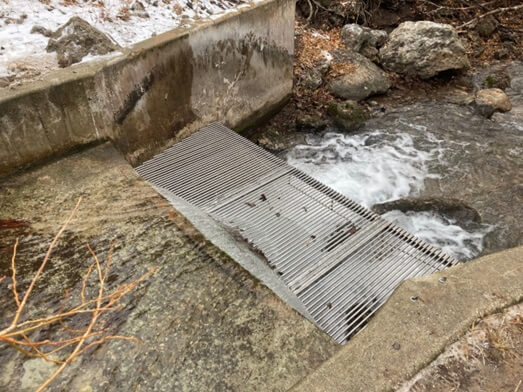
Another view of the barrier screen 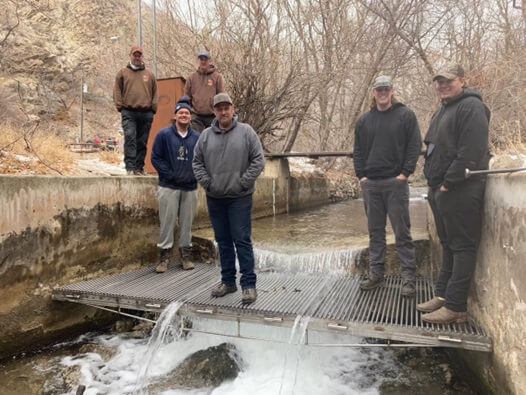
The DWR crew who installed the Mill Creek barrier
Potassium Permanganate Purchase – $1,000 – This allotment of Slam funds helped with the purchase of potassium permanganate for a planned rotenone treatment on Deadman Creek, a tributary to the Bear River which is still undergoing cutthroat restoration efforts. Potassium permanganate is required for neutralization of rotenone in flowing water systems and therefore an essential part of cutthroat trout restoration work.
Southern GMU Bonneville Outreach Signs – $3,450 – The Utah Cutthroat Slam funded the design, materials, and installation of signs by the Southern Bonneville GMU Team. They were able to fulfill commitments for public outreach in conjunction with Southern BCT restoration/conservation, both across the GMU and within specific, higher-profile projects (Clear Creek, Mammoth Creek, Upper EF Sevier River).
Red Cedar Creek Helicopter Reintroduction of BCT – $2,500 – Red Cedar Creek’s headwaters are very remote and inaccessible, making it a very difficult location for biologists to hike fish in via backpacks. The BLM granted the use of a helicopter to reach the headwaters of Red Cedar Creek to reintroduce Bonneville cutthroat trout following a restoration project to remove nonnative fish in 2019. The effort was a success, and the population is doing well, but would benefit from an additional stocking. The species will be supplementally stocked again, to ensure continued recruitment.
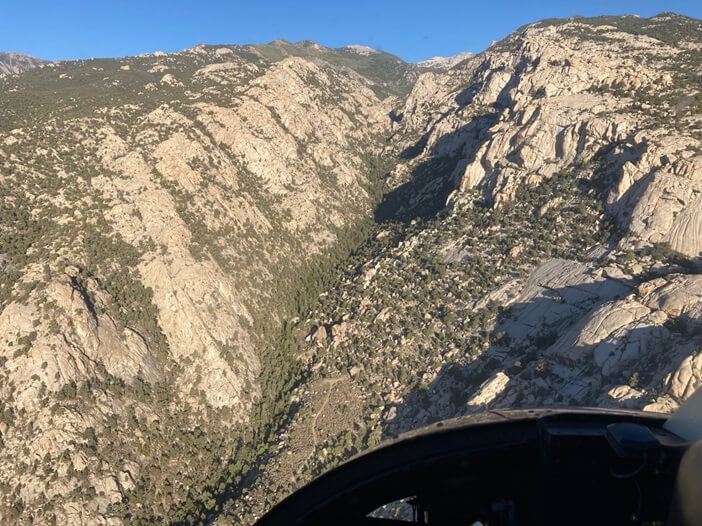
Red Cedar Creek in 2020 from the view of the helicopter 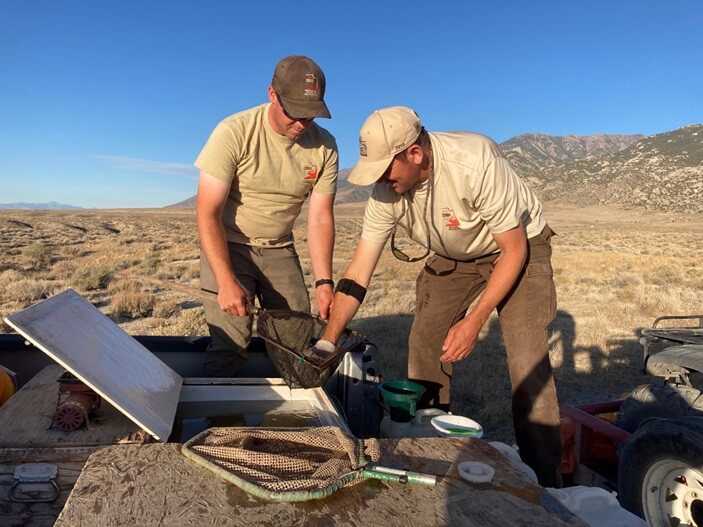
Transferring BCT into containers to stock the headwaters of Red Cedar Creek 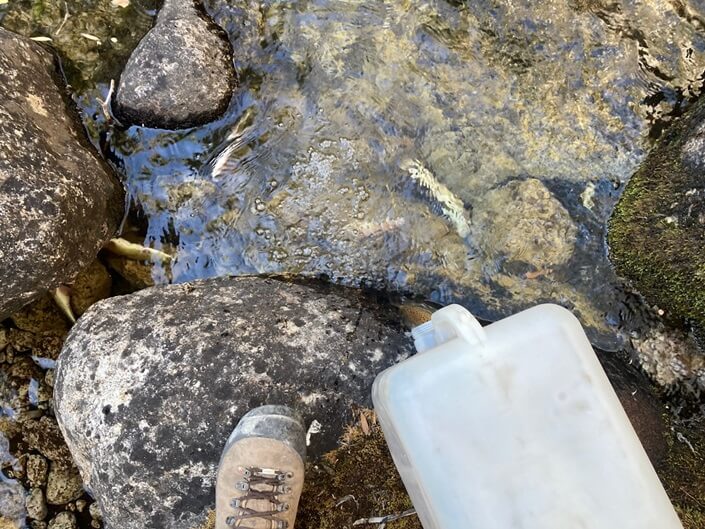
Stocking BCT into Red Cedar Creek Headwaters in 2020
Lake Canyon Lake Interpretive Kiosk – $3,000 – Lake Canyon Lake supports one of several native Colorado River cutthroat trout broodstocks in Utah. In addition to its purpose as a native cutthroat trout source, the lake has developed a strong following from the angling community given the abundance of healthy, large, and beautiful native fish. An interpretive kiosk was developed and installed in 2020 to educate anglers about the lake’s importance for sportfishing and species conservation, as well as how the DWR manages native cutthroat within the state of Utah.
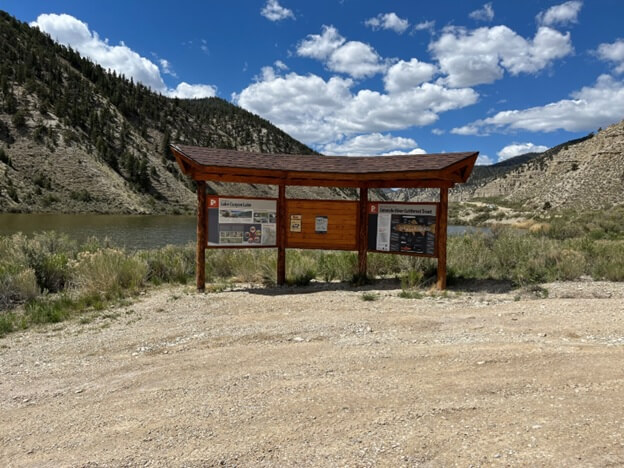
Chalk Creek Telemetry Study – $9,200 – The DWR conducted a project to assess the movement of Bonneville cutthroat trout in the Chalk Creek drainage from Sept. 2022 to Nov. 2023. Some noteworthy observations were that the South Fork and East Fork are important spawning tributaries, there are no complete migration barriers within the project area, entrainment in water withdrawal systems is not a significant risk, while predation is a significant risk for BCT in Chalk Creek. The findings from this study will help us better manage the BCT population in Chalk Creek, allowing us to focus on the most strategic efforts to protect this population (e.g., in-stream habitat structures rather than fish screening or barrier removal).
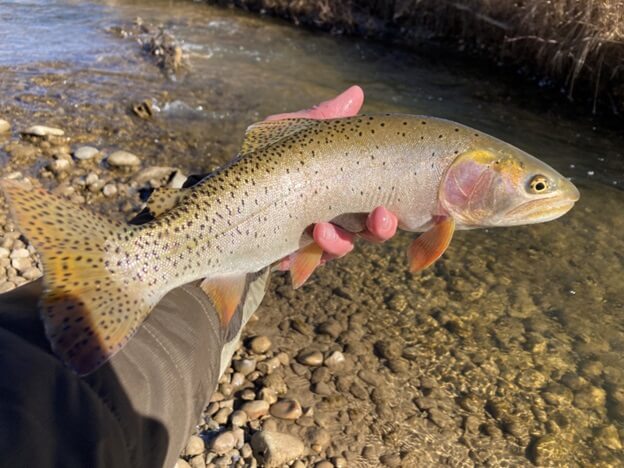
Example of a Bonneville cutthroat from Chalk Creek 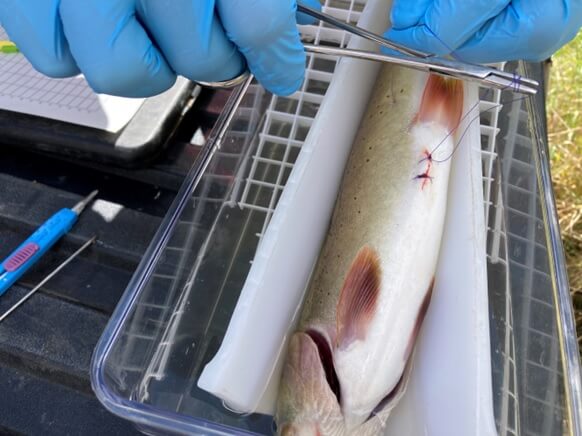
Suturing the cutthroat after inserting the radio telemetry device 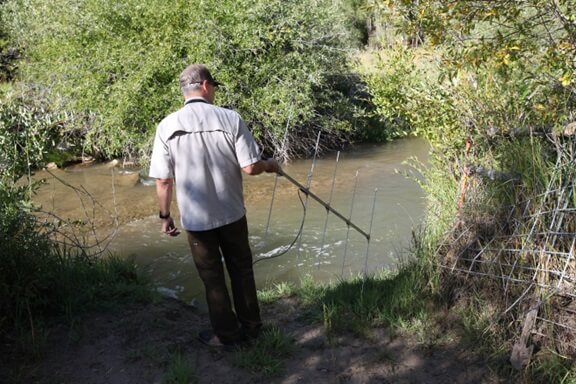
Reading the radio signals from the tagged cutthroat
Colorado River Cutthroat Trout Mural – $6,000 – “Utah Wildlife Walls” hopes to place murals featuring native Utah wildlife in every county in Utah. This project started in Salt Lake City with the painting of a “Bonnie Wall,” a mural depicting a Bonneville cutthroat trout to celebrate and spread awareness about the county’s local native cutthroat. The following year, the Slam helped fund the painting of a Wildlife Wall located in Vernal. Colorado River cutthroat trout were chosen to be painted by Utah artist Chris Peterson, due to the town being near the watershed of this subspecies. Chris teamed up with Vernal City and the DWR to create this beautiful and unique display for the subspecies. During the community’s 2023 Dinah SOAR Days event, the grand unveiling of the mural took place alongside activities such as fly casting challenges. The CRCT mural highlights the CRCT conservation efforts in the Uinta Basin and was a welcome addition to the town by locals and visitors alike..
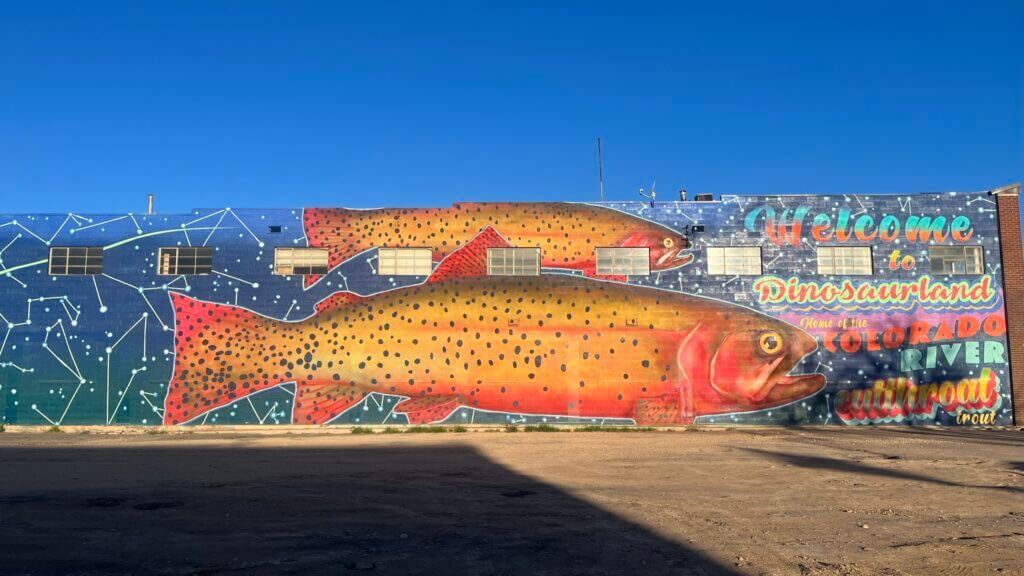
Clear Creek Stream Improvement – $9,000 – This project was recently completed and the funding was used to help cover the cost of a redesign to the current stream stabilization project intended to protect a roadway. The redesign will make the project more fish-friendly (e.g., better habitat and allow fish passage) and also educate engineers about the benefits of fish-friendly stream stabilization techniques.
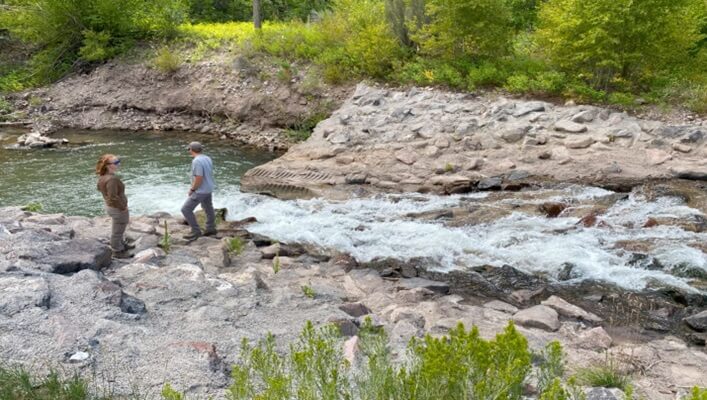
Fish Creek Riparian Restoration – $15,000 – This project supported ongoing riparian and instream habitat restoration efforts on Fish Creek and the lower Beaver River. Fish Creek, a tributary to Clear Creek near Fremont Indian State Park, supports a vital conservation population of Bonneville Cutthroat Trout (BCT) but has struggled to recover following severe flooding and erosion caused by the 2010 Twitchell Canyon Fire. Although initial stabilization work was completed in 2014 and 2015, many areas have experienced limited natural regrowth.
To continue these restoration efforts, the Utah Division of Wildlife Resources partnered with Fishlake National Forest, the local grazing permittee, and the Utah Conservation Corps (UCC) to plant native riparian vegetation in areas that remain degraded. The focus of this work is to stabilize streambanks, reduce erosion and sedimentation, and improve habitat conditions for BCT spawning and rearing.
The first round of Utah Cutthroat Slam funding was administered through the Lower Beaver River project in order to utilize an existing UCC contract and streamline the process for a relatively small but important task. UCC crews completed 80 hours of riparian planting on Fish Creek—40 hours in November 2023 and another 40 hours in March 2024—using locally cut woody vegetation to install live stakes along a critical section of the stream. A second distribution of Slam funds in 2024 supported continued vegetation planting in coordination with project partners. These efforts are improving long-term ecological resilience in both stream systems.
Bear River Cutthroat Mural – $6,000 – The Slam helped fund the creation of another Utah Wildlife Wall by artist Chris Peterson. This mural was chosen to depict another native subspecies of cutthroat, the Bear River cutthroat trout. This mural is located along the Little Logan River in Logan, UT. With Cache County being within the native range of Bear River cutthroat trout, it seemed fitting to choose this cutthroat to be depicted here. This is another project that highlights the importance of native fish conservation and spreads awareness for native cutthroat trout.
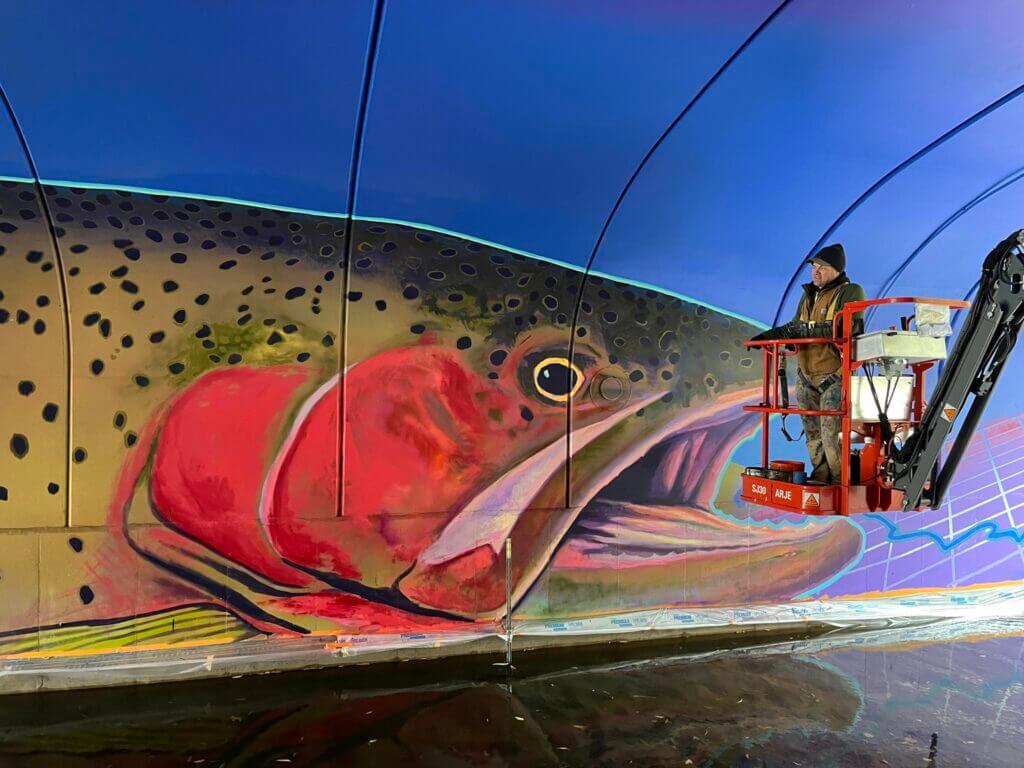
Red Cedar Reintroduction of BCT – $4,000 – Red Cedar Creek, as mentioned earlier, was stocked via helicopter in 2020 with the aid of Slam funds. In 2024, plans have been approved for these headwaters to receive supplemental stocking to ensure the continued success of this renewed population. The actual stocking event should happen during the spring of 2025.
And with each passing year, additional projects are reviewed by a team made up of members from Utah Trout Unlimited and the Utah Division of Wildlife Resources. According to the needs presented, various projects are approved for the dispersal of Slam funds and ultimately various cutthroat populations across the state are supported with the donations of anglers who participate in the Slam.
Hopefully as you venture to Utah’s lakes, rivers, and creeks, you understand that your participation and contributions are the reason so many of these precious native cutthroat populations exist or are preserved for yourself and generations to come. Participation in the Utah Cutthroat Slam has made so many projects possible, from actively reconnecting waterways, to instream restorations, and even spreading awareness about native trout. Know that your donations on behalf of the Slam are going to great causes and we are excited to see so much increased interest in the Slam as the years go on.
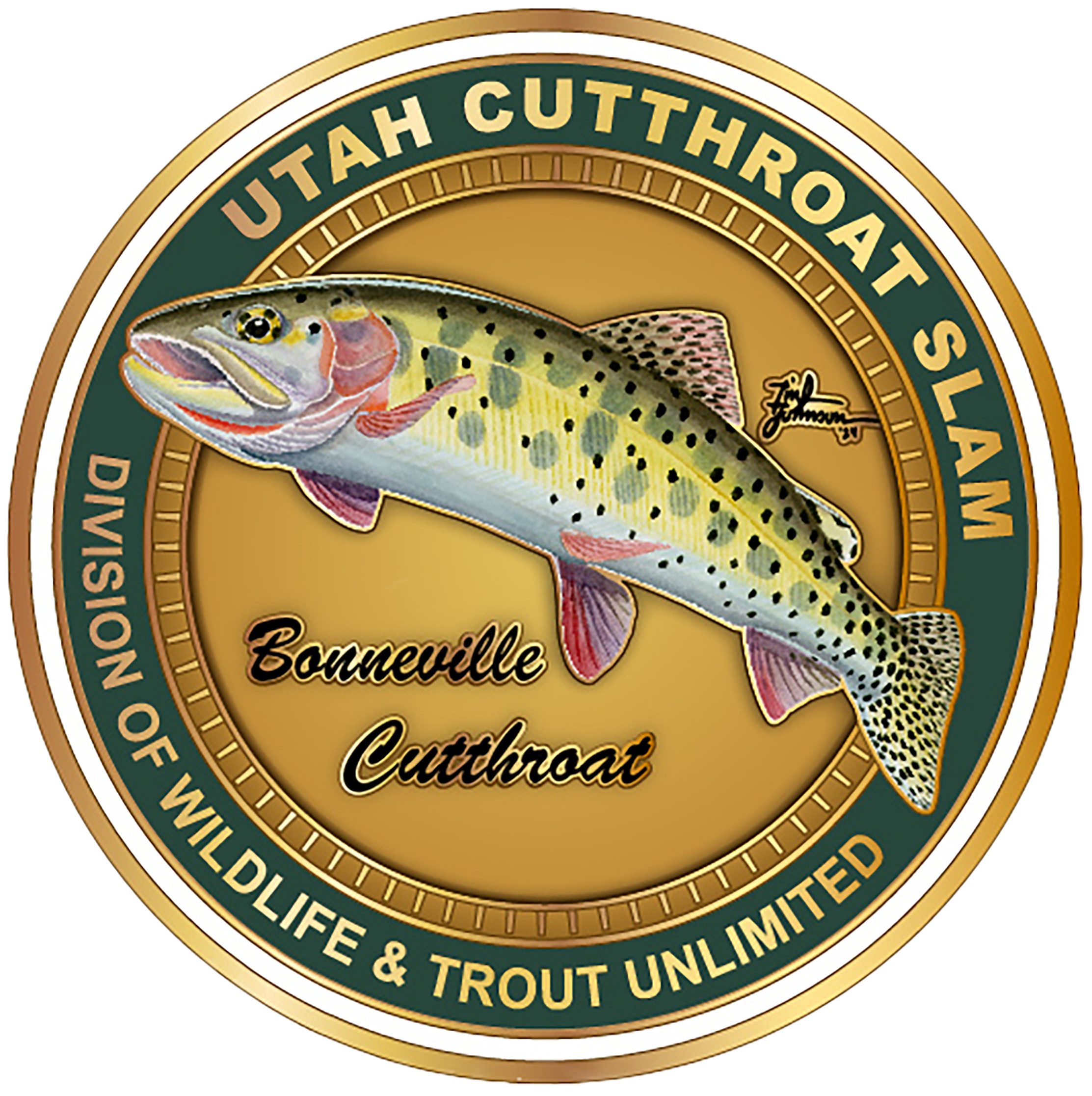
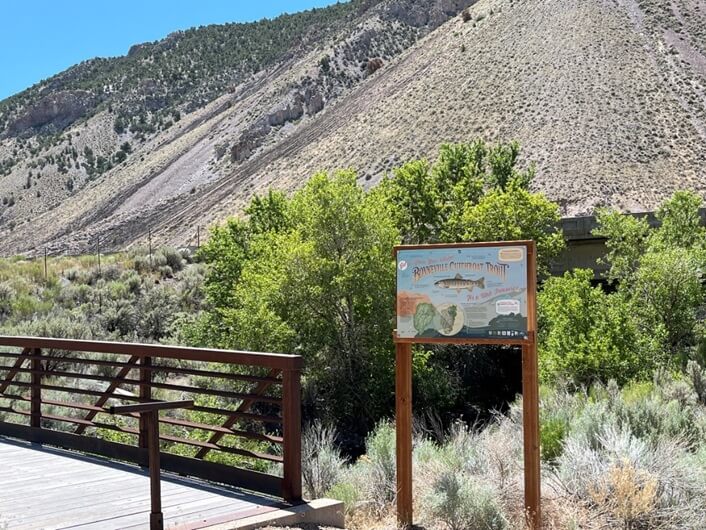
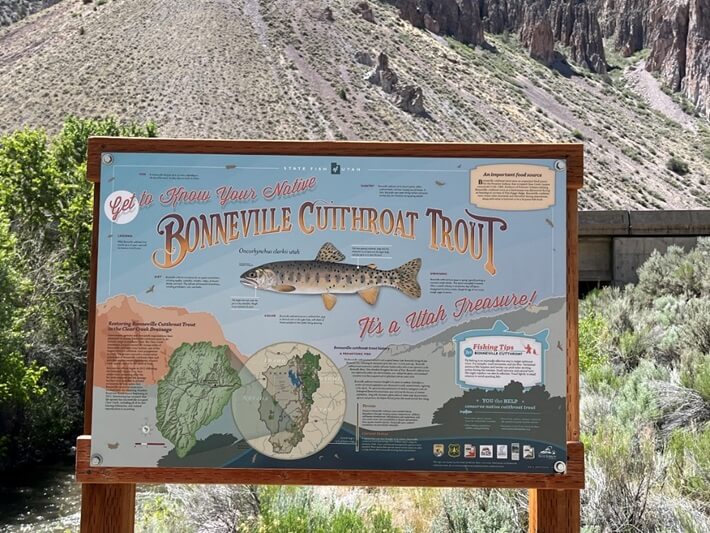
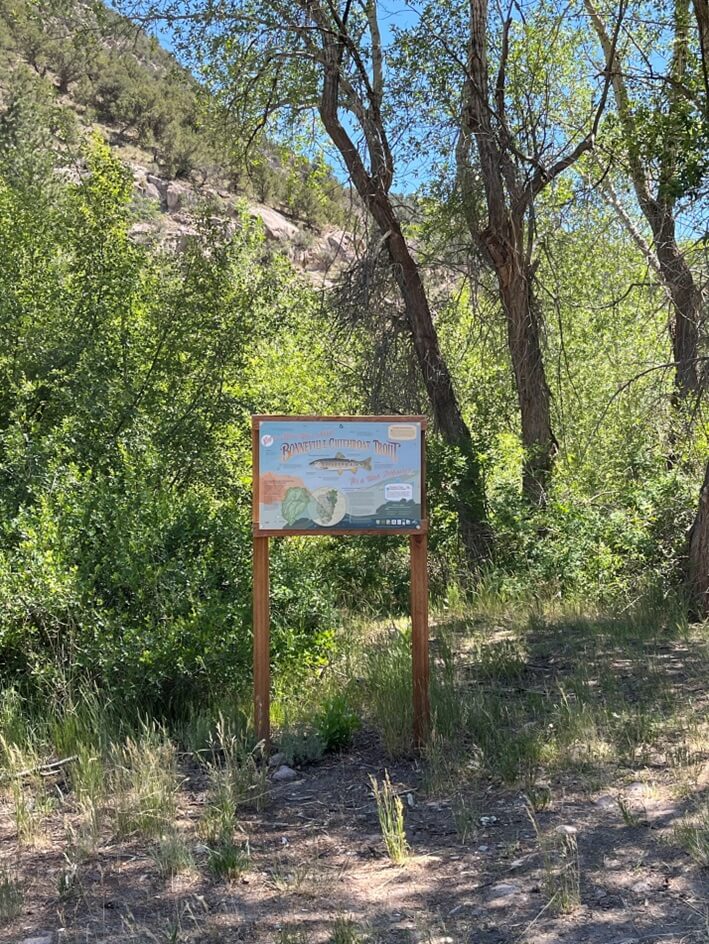
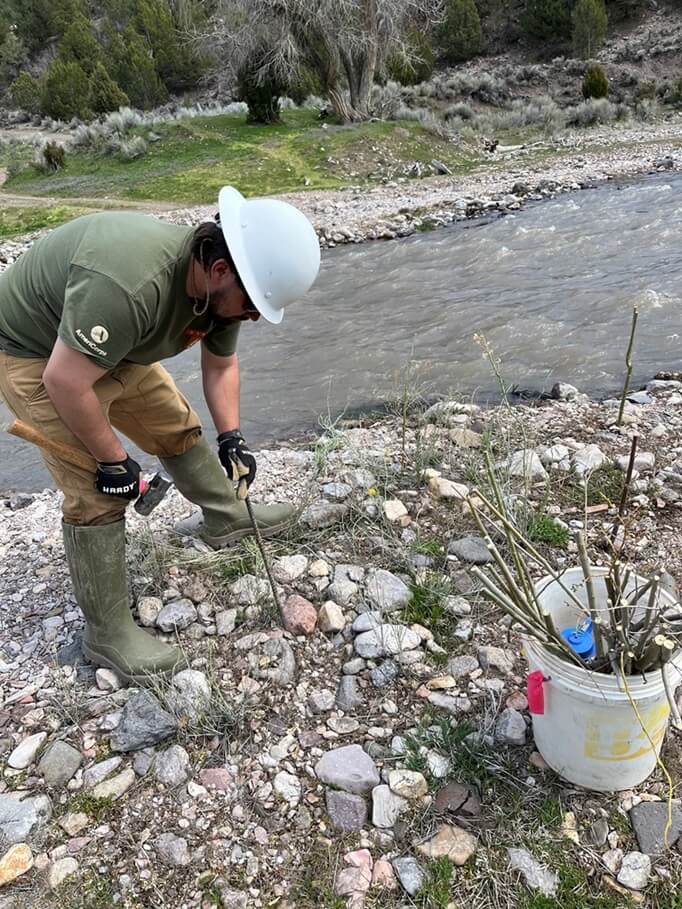
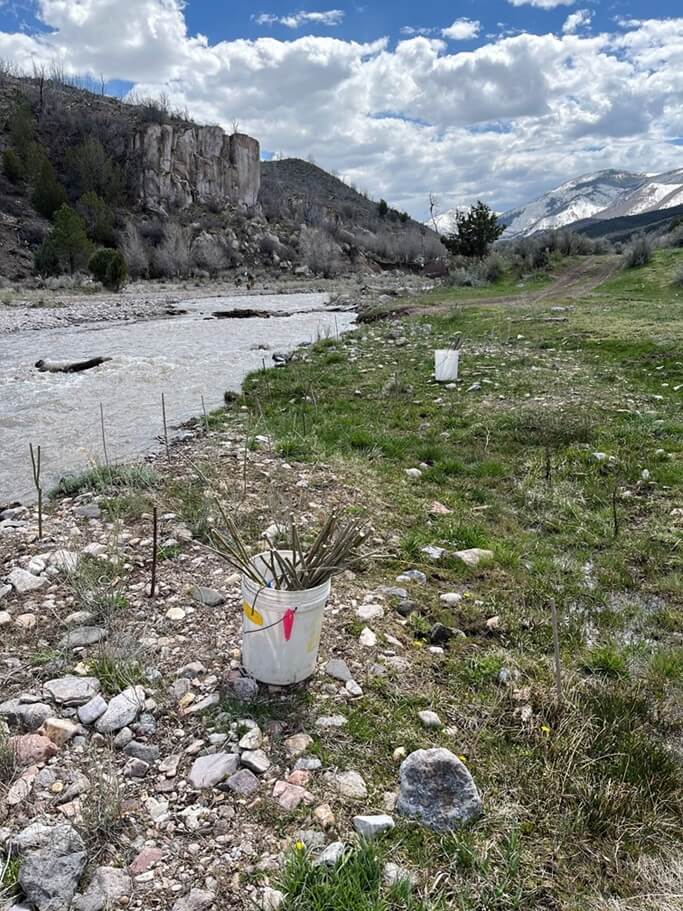
Sorry, the comment form is closed at this time.